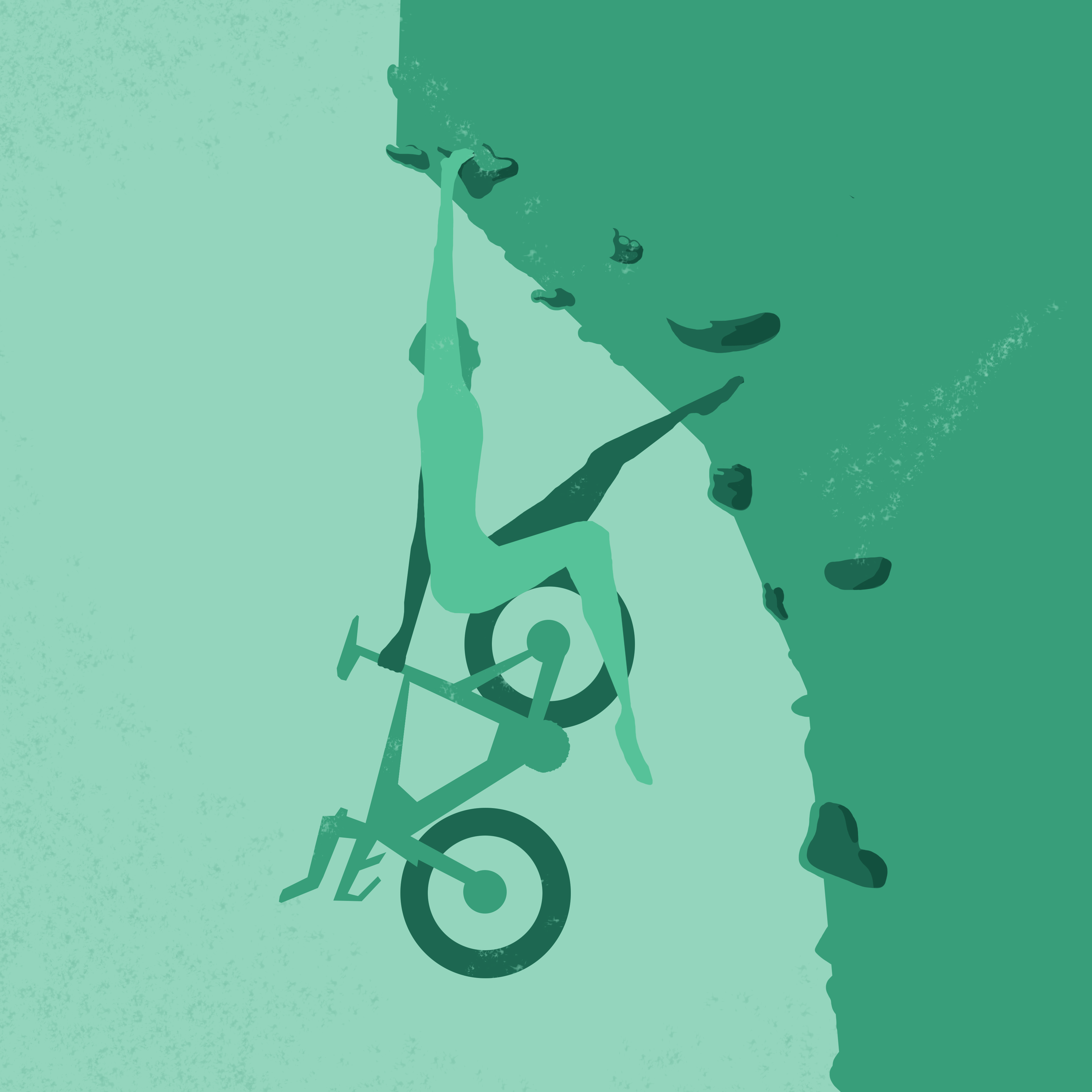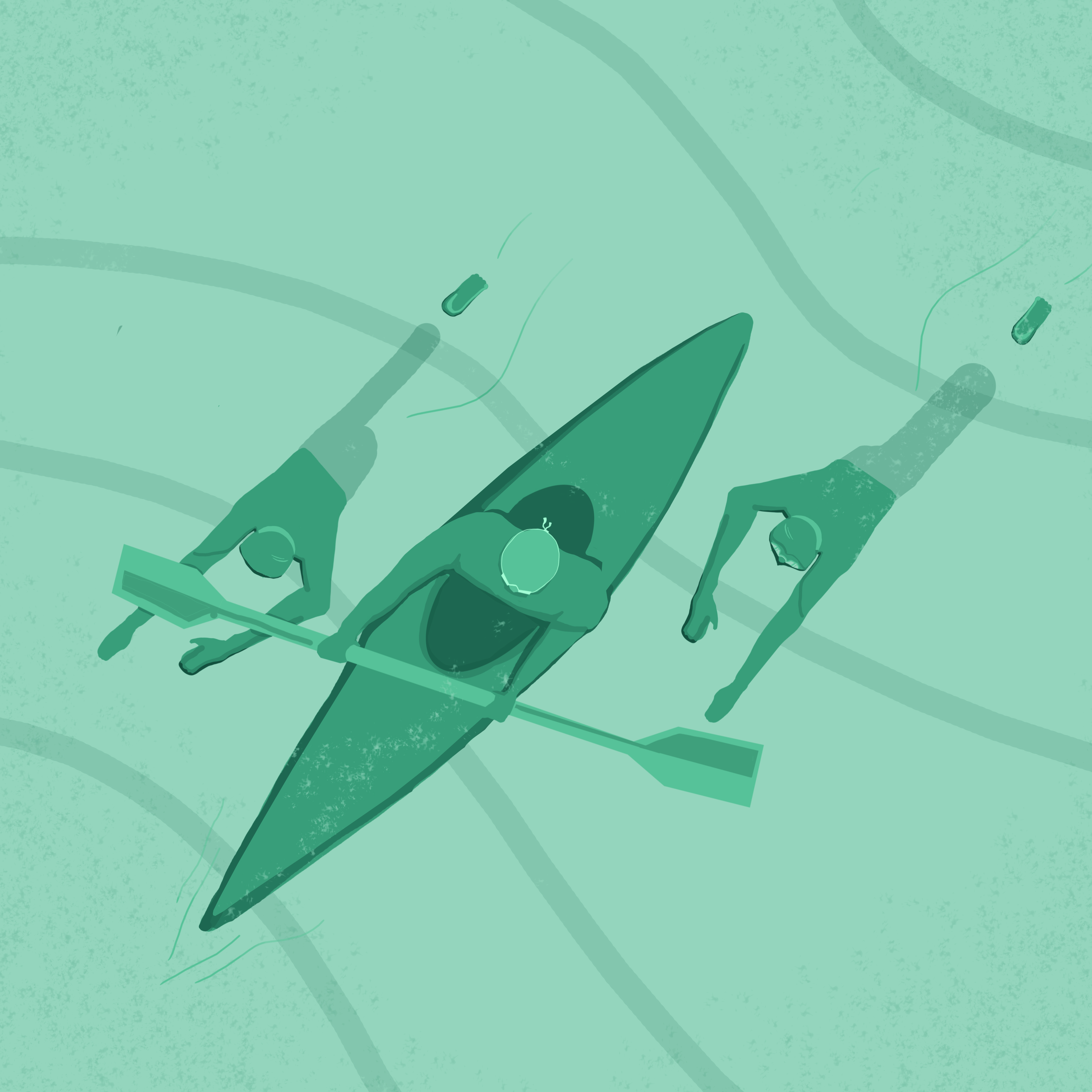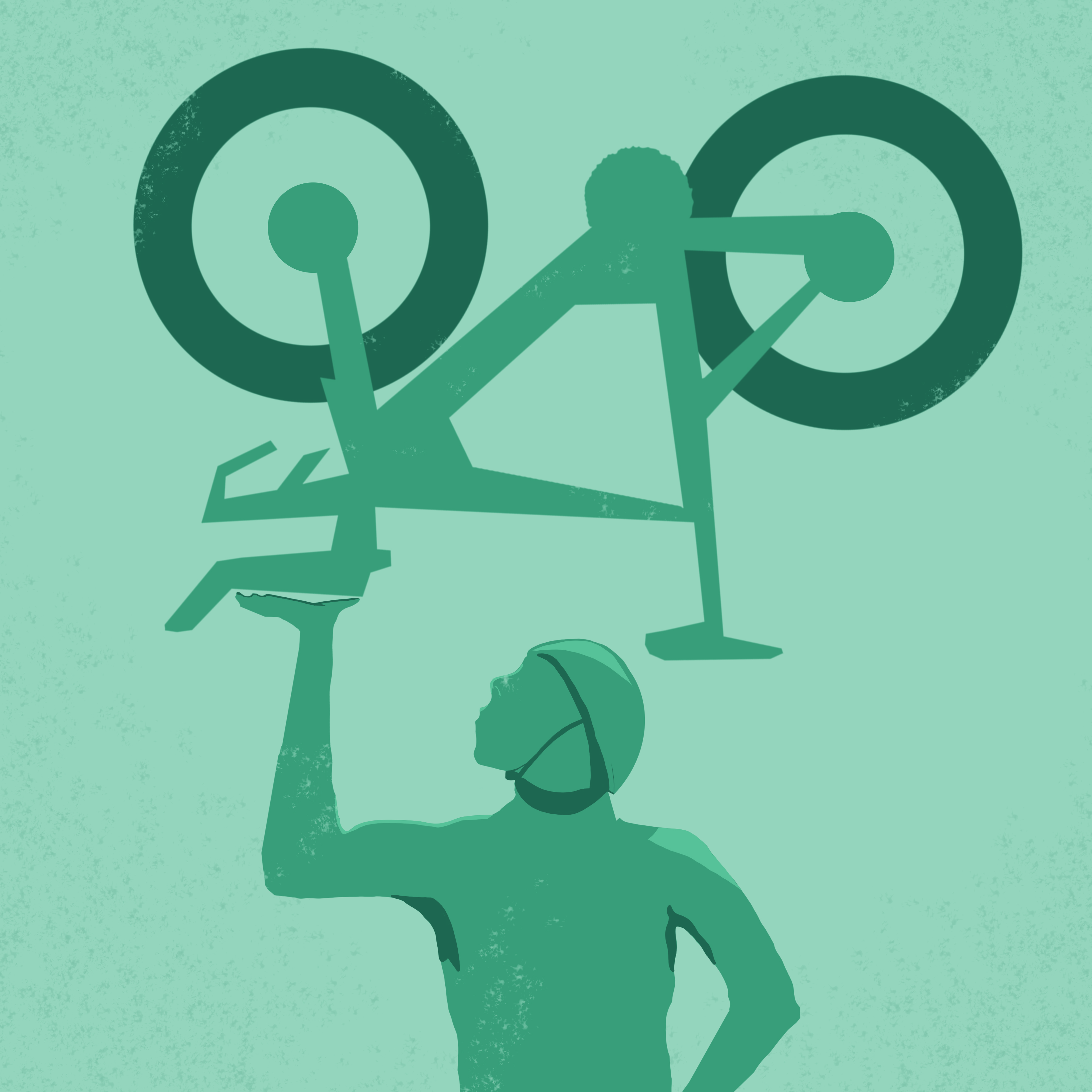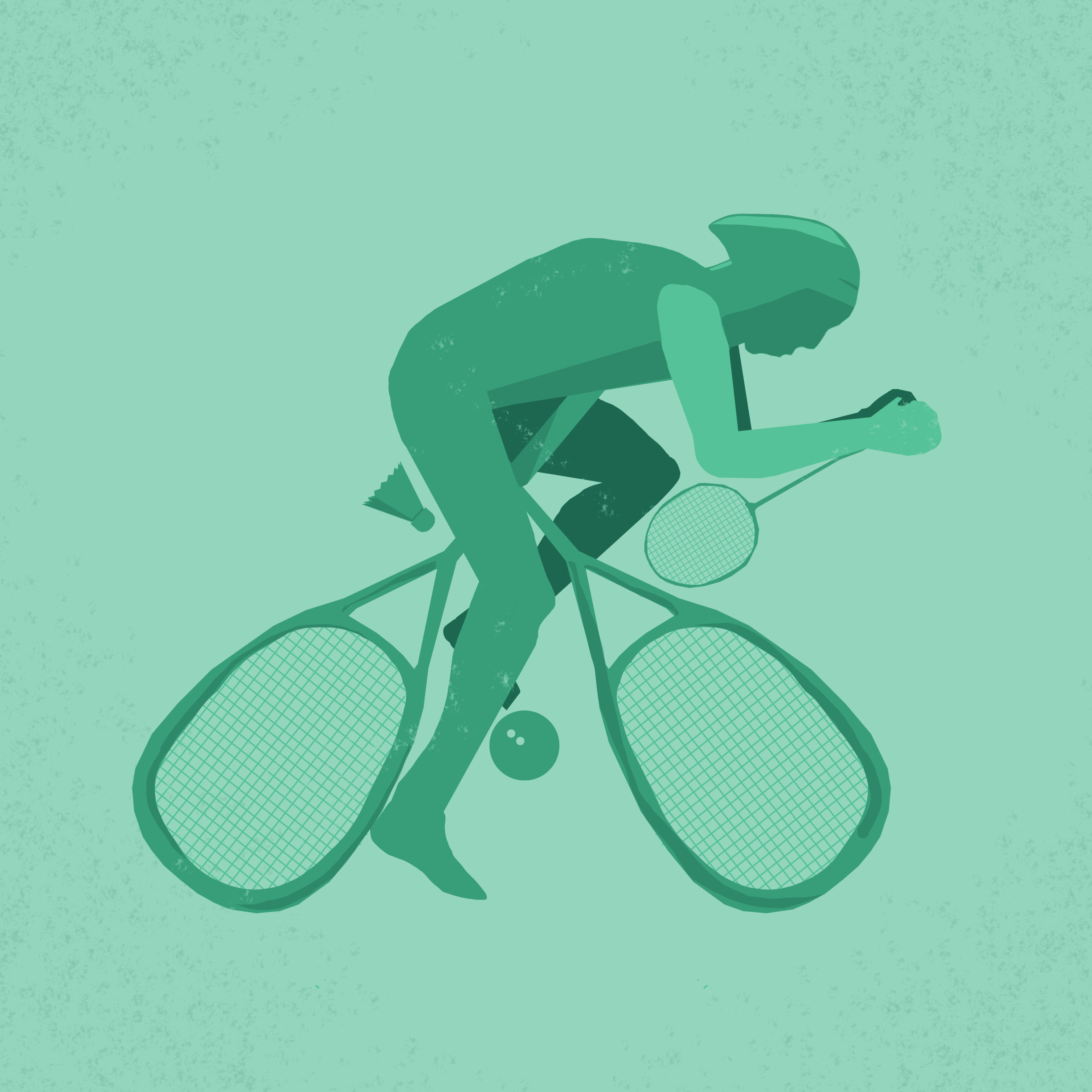The best cross-training sports for triathlon
You love swim, bike and run but you’ve confessed to having a sporting affair! Will it irrevocably harm your triathlon performance or should you continue guilt-free toward a new PB? We dissect the pros and cons of seven cross-training sports…

World-class triathletes train upwards of 25hrs a week. They eat, train, sleep, repeat. From March to October, throw in racing, too. Their hobby is their job. You, the age-grouper, are not a professional. You balance triathlon, family, work and the occasional gin or craft ale.
For many of you, you also manage the pros and cons of competing in another sport, whether that’s five-a-side football, a lunchtime game of squash or a weekly long hike. You enjoy your ‘other’ sport, naturally, but does it help or hinder your multisport performance?
It’s a question we’ll answer below, focusing on seven popular pastimes. We’ve recruited seven of the UK’s finest coaches who’ll examine the physiological and psychological demands of each and give it a yay or nay.
But one thing they all agreed on was the motivational boost variety will give your tri performance. There’s also evidence that young triathletes, in particular, will benefit from playing many sports to forge a more rounded, robust mind and body. With that, let’s check out our supplementary sporting seven…
Climbing and bouldering

Both climbing and bouldering engage nearly the whole body’s musculature, says Matthew Tithecott of Kent-based Tri Mr T Coaching, meaning they complement triathlon nicely. “Like multisport, they activate a wide range of muscles, from your heart to your biceps and quads,” he says. “All the pushing, pulling and lifting involved in climbing mirrors aspects of resistance exercise so it’s great for strength work.”
In fact, climbing’s an endlessly variable series of movements with no climbing surface or route quite like another. Research suggests this kind of dynamic muscle activation is much more challenging and fatiguing than simpler, repetitive movements, and lowers the chances of injury. Then again, it’s best to avoid a late-night indoor-climbing session if you’ve a tough pre-breakfast swim planned the following day.
Climbing delivers an excellent cardiovascular workout, too, according to William Sheel, a professor of kinesiology at the University of British Columbia in Canada. In a 2004 study that Sheel conducted on the physiology of rock climbing, he found that climbers use a significant portion of their aerobic capacity, but, of course, how high your heart rate climbs depends on how hard you push yourself.
The final benefits are nurtured up top. “The balance and neuromuscular coordination required for climbing may bolster your brainpower,” says Tithecott. “A recent study from the University of North Florida found that activities involving balance, muscle co-ordination and spatial orientation could significantly improve a person’s working memory, as well as other cognitive functions.”
Climbing and bouldering: pros and cons
PROS
- Great strength workout that engages numerous major and minor muscle groups
- Evidence that climbing boosts brain power
CONS
- Upper-body focus means you must balance this and swimming carefully
- Be careful to land properly, especially when bouldering
Kayaking

Top coach and physiotherapist Wai Ming Loh, who’s based in Exeter, suggests kayaking makes you a hardier athlete and even reduces your risk of injury, as well as preventing any semblance of staleness and disinterest in tri.
“Even though triathlon consists of three sports, they largely work the body in straight lines,” he adds. “Kayaking involves rotational movements that require a lot of control, engaging muscles that are often neglected in triathlon particularly around the trunk. This gives the body more stability, which is, in turn, beneficial for swimming, cycling, and running.
Kayaking also relies heavily on the lat muscles, which are also the key force producers in swimming.” This benefit’s also a potential downside, however, as similar to climbing, fatiguing your lats could impair the quality of your subsequent swim session, so ideally follow a kayaking effort with a bike or run.
As Loh mentioned, that greater core strength and stability is great across the swim, bike, run board but why is elaborated on here: you can forge a more streamlined position in the swim, leading to more speed for no more effort; as well as easing bike-related back pain, a strong core allows you to handle the output generated by your legs and remain in an aero position; and it’ll lead to better form on the run – particularly important for Ironman racing.
“Depending on the type of kayaking you do, it can also be aerobic, anaerobic or a mixture of both,” adds Loh. “This stresses the same systems as triathlon so can only prove beneficial.”
Kayaking: pros and cons
PROS
- Strengthens your core, which’ll pay off across all three disciplines
- Raises aerobic and anaerobic capacity
CONS
- Monitor upper-body freshness (or not) to avoid harming your swim leg
- Advanced skills take practice and time that could be spent on swim technique
Team sports
Football and rugby are popular pastimes and, if planned correctly, can elevate your triathlon to another level. “While many athletes also train with clubs, most of us train alone. This means that, more often than not, our only competitive experience comes when we pin a number on,” says Somerset resident and 1stElement Coaching’s James Hester.
“Taking part in a team sport not only increases your competitive experience but also pushes you to work harder in training. Committing to weekly matches with a team adds a level of accountability when you may otherwise decide to stay in the warm and dry.”
Like many of the sports here, team sports boost core strength, too. That’s because while the three tri disciplines are very linear, team sports involve lots of transverse and oblique (side to side and crossways) movements. “Team sports also activate antagonist muscles (the opposing muscles to the ones we usually use in tri) and help support stability, flexibility and range of motion,” says Hester.
On the flipside, team sports heighten the chances of an impact injury and, adds Hester, “too much team-sport training and matches can impact your triathlon racing and training. Avoid being pressurised into doing more than you want. It’s easy to be swayed by a persuasive captain or manager!”
Team sports: pros and cons
PROS
- Will help to sharpen your competitive edge
- Boosts core strength and good for sprint work
CONS
- Team sports are often contact sports, which increases the chance of an impact injury
- Can be draining, so beware of overtraining
CrossFit training

“As a coach, I recommend incorporating strength training into your training programme to every triathlete I work with,” says Triathlon Coaching Company’s Chris Wallace of North Wales. “I look at this as the foundation of good athletic ability. To be a fast athlete, you need to have a bulletproof platform; being strong, flexible and functional allows you to train well, avoid injury and lift your general health.
“The fundamentals of CrossFit are using functional-strength exercises at high intensity with a constantly varying programme. Actioned correctly under the supervision of qualified and experienced coaches, this can complement your tri training well.”
Used wisely within your regular schedule, CrossFit-style workouts can maximise what little time you must dedicate to strength, conditioning and flexibility.
“But there are a few things to be aware of,” says Wallace. “Firstly, learn the movements, ideally with a qualified coach. If you can’t complete the exercise slowly, under control and without weight, you’ll increase injury risk if you add load or intensity.”
“Also, consider where the sessions will fit within your plan,” adds Wallace. “This is vital. Be aware of the time you have available each day and week, factor in recovery time, and be mindful of scheduling challenging swim, bike or run sessions around your strength sessions; in fact, ideally leave 24-48hrs between to allow your body to recover fully.”
CrossFit training: pros and cons
PROS
- Lays out a platform to build greater swim, bike and run speed
- Proven that improved strength reduces the chances of injury
CONS
- Practise movements without weights or raise the risk of injury
- Exhausting workout so tricky (but not impossible) to balance with triathlon
Hiking

“Hiking and triathlon are natural bedfellows, and the potential benefits of hiking to your triathlon training are manyfold,” explains Berkshire’s Georgia Jackson of Merlin Tri Coaching. “Walking is an aerobic activity that’ll add extra pennies to your endurance piggybank at a relatively low impact.
“As a weightbearing exercise, it also promotes bone-density maintenance and musculoskeletal resilience, and if you add hills and challenging terrain, you’ll build leg and core strength, balance and stability. It’s a great opportunity to focus on good posture and alignment, too – key foundations of athletic performance.”
Long hikes are also excellent complementary training for long-course racing, as you can notch up hours on your feet with a lower risk of injury than the traditional long run approach. If you’re recovering from illness, injury or childbirth, it’s also a gentler way to get the blood moving and lungs oxygenated, and to transition back to your swim, bike, run training safely.
“Finally, aside from the pure pleasure of exploring beautiful places and filling your lungs with fresh air, slowing down a little provides extra thinking time and serenity that’s often lacking in a highly structured training plan squeezed around a hectic day job and other commitments,” says Jackson. “It’s an activity that can happily be shared with friends and family, too, which is so important for ensuring balance across your life.”
Hiking: pros and cons
PROS
- Good training intensity for off-season aerobic work
- The perfect activity to clear your mind
CONS
- Long hikes are more tiring than you’d think. Ease off on the following day’s bike or run
- Safety’s paramount, especially when hiking on the moors
Rowing
It’s well known among sports scientists that both professional rowers and triathletes have among the largest aerobic capacities in endurance sport. “That’s true,” says award-winning Humber coach Craig Lane, “but as a coach, how would I utilise both to train an athlete and how could an athlete compete in both?”
“When I think of rowing and multisport combined, I think of Sir James Cracknell, and ex-offender John McAvoy, who set multiple Concept-2 rowing records while serving his sentence in prison. He’s now close to obtaining a professional Ironman licence. So, if these two can excel in both sports, then there must be some correlations as to why they complement each other.
“I coach an athlete in New Zealand, who’s cross training in a kayak. Her main 2022 goals are an Ironman 70.3 race followed by a coast-to-coast adventure event, so we’ve included indoor rowing to build up her upper-body endurance. After all, rowing increases your muscular endurance, core and upper body strength, and that can only help build your swimming stamina.
“Personally, I often use the rower in the off-season or in the first two base phases of my training plan when the weather is usually cold, wet or icy, as this type of aerobic cross training allows the triathlete to take part in a low-impact form of endurance sport without injury risk.”
Rowing: pros and cons
PROS
- Total body workout is a great match for triathlon
- Indoor rowing a great outdoor-workout substitute
CONS
- A tiring all-body effort so balance carefully with low-intensity triathlon efforts
- Practise good form or prepare for a bad back!
Racket sports

One of the appeals of racket sports is seasonal – you can regularly train indoors during the winter months. “And one of the key pluses of that comes from the mobility and flexibility required for racket sports,” says Edward Collins of Herefordshire’s InBalance Coaching. “This helps triathletes hone the technical aspects of tri.
“For instance, enhanced mobility allows better positioning on the bike, while improved flexibility and stability allows for a stronger and more stable running posture. Areas that wouldn’t necessarily come to mind – namely T1 and T2 – benefit from greater flexibility, too, such as removing your wetsuit and transferring from bike to run. Valuable time saved, which can be crucial in shorter-distance races.”
The strategic nature of racket sports pays dividends, as well. Squash, tennis, badminton… requires mental alertness to stay calm under pressure, plus the ability to ‘read’ and outsmart the opponent. All these attributes are beneficial to the age-grouper. “There’s also the social aspect of racket sports, which can only improve your way of life,” says Collins.
Then there’s cranking up muscular endurance and a cardiovascular hit. But, warns Collins, “be careful of overusing your shoulders and arms, which can lead to a spell off injured. Common injuries include neck pain, rotator-cuff tendonitis, inflammation of shoulders and bicep tendonitis. And remember that racket sports are another expense: further equipment and club membership fees.”
Racket sports: pros and cons
PROS
- Significant triathlon gains including time-savings in transition
- Teaches you to stay cool in the hottest of situations
CONS
- Beware the spectre of shoulder injuries
- Racket sports and subsequent membership fees are another sporting expense
Top image: Getty Images
You might also be interested in:




